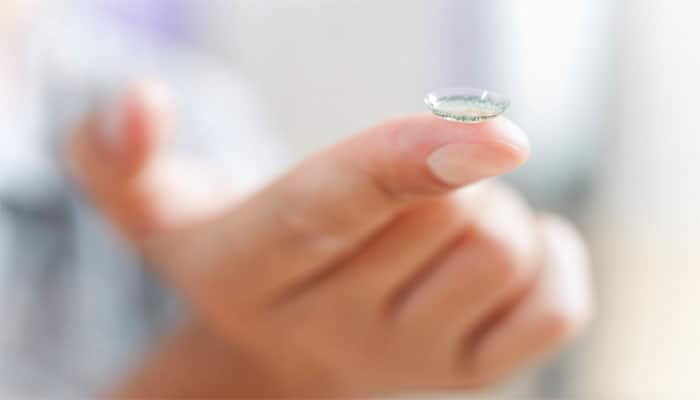Washington: Inspired by the uniquely shaped retina of fish, scientists have designed new contact lenses that can adjust focus within milliseconds.The contact lens could be life-changing for people with presbyopia, a stiffening of the eye's lens that makes it difficult to focus on close objects.
Presbyopia affects more than 1 billion people worldwide, half of whom do not have adequate correction, said the project's leader, Hongrui Jiang, from the University of Wisconsin in Madison.
While glasses, conventional contact lenses and surgery provide some improvement, these options all involve the loss of contrast and sensitivity, as well as difficulty with night vision.Jiang's idea is to design contacts that continuously adjust in concert with one's own cornea and lens to recapture a person's youthful vision.
The project requires overcoming several engineering challenges. They include designing the lens, algorithm-driven sensors, and miniature electronic circuits that adjust the shape of the lens, plus creating a power source - all embedded within a soft, flexible material that fits over the eye.
In their latest study, researchers focused on a design for the image sensors.
"The sensors must be extremely small and capable of acquiring images under low-light conditions, so they need to be exquisitely sensitive to light," Jiang said.
The team took their inspiration from the elephant nose fish which survive by being able to spot predators even in muddy water. Its retina has a series of deep cup-like structures with reflective sidewalls.
That design helps gather light and intensify particular wavelengths needed for the fish to see. The researchers created a device that contains thousands of very small light collectors.
These light collectors are finger-like glass protrusions, the inside of which are deep cups coated with reflective aluminium.
The incoming light hits the fingers and then is focused by the reflective sidewalls. Researchers tested the device's ability to enhance images captured by a mechanical eye model designed in a lab.
They developed a type of lens inspired by the compound eyes of insects and other arthropods.
Insect eyes comprise thousands of individual microlenses that each point in different directions to capture a specific part of a scene. Researchers developed a flexible array of artificial microlenses.
"Each microlens is made out of a forest of silicon nanowires," Jiang said.
In order to change focus, the contact lens will also need to be equipped with an extremely small, thin power source.
Jiang's solution was a solar cell that harvests electrons from sunlight, converting them into electricity, and that also stores energy within a network of nanostructures.
















